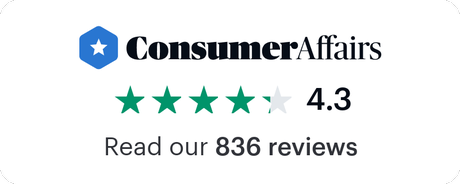Certified checks are generally used for serious money transactions, not that all transactions aren’t serious. However, they are typically used large and important transactions: a down payment on a car or house for instance. A lot of people are often mixed up with the terms cashier’s check and certified check. Yes, there is a difference.
What are the differences between certified check and cashier’s checks?
The difference is what account the funds are being taken out of. With a certified check,
- The money will be taken out of your account when your payee cashes it
- All funds are generally available 1 day after deposit
- Signed by 2 bank associates and the account holder to show authenticity
However, with a cashier’s check
- The money is coming from the bank’s account immediately
- Will never bounce
- Works just like cash
How do you get a cashier’s check?
Getting a cashier’s check basically allows you to give the bank the amount of money you want the check to be worth, and they issue the check on your behalf. The money you give the bank associate goes into “the bank’s account”. He or she will then issue a check to the payee you request. When the check is cashed the money will come out of the bank’s funds and not yours. Cashier’s checks are guaranteed funds, because a bank’s check wont bounce or be returned.
So, What is a Certified Check Exactly?
A certified check is a check that has been corroborated by the bank that issues it, as good. Meaning that the account it is coming from has sufficient funds and the signature on the check is legitimate. At the time of purchase, the bank associate would verify that the person purchasing the check was indeed the account holder, or an authorized person also on said account. Then the associate would verify if there were enough funds in the account, so that the check would not be returned or bounced.
How much are certified checks?
Generally certified checks are free, if you have an account with the bank you attempt to purchase one for. Yet, some banks do charge a minimal fee depending on the type of account you have with them. The most a bank will likely charge you to issue a certified check is $20. And unlike money orders, you can only purchase certified checks from financial institutions:
- your bank
- your credit union
- your online banking institution
With any financial transaction, there are risks involved. Certified checks, are just one of the ways that scammers will try to get you. Because the funds are certified, a majority percentage of the money gets deposited into the account of the payee. However, once the bank discovers the check is a fraud, whoever deposited the check will be responsible for the money.
Why do people use certified checks over personal checks?
The money in a certified check is guaranteed the financial institution that issues it. The funds are in the bank account of the person who requests the check to be made. Whereas, with a personal check there is no real guarantee. Someone can write you a personal check, and not have the funds in their account. That will cause the check to bounce. Most banks will charge a bounce fee, to your account because you are the one who attempted to deposit the check.
How to Make Sure You’re Not Scammed:
- Call the bank or go to the issuing bank. Do not call the number on the check, but do a google search and contact them that way. Just like checks, phone numbers can be fake too.
- Check for any misspellings or printing errors. This is a dead giveaway that the check Is a fake.
- If it seems weird, it is. You should trust you gut.
- Do not cash a check from someone you don’t know.
- Use cash or money order.
- Attempt to cash the check. The bank teller will be able to tell you if something is fishy about the issuing bank or the funds.
- Check for the watermark. If the bank is from a real bank, it’d have their official watermark on it and probably some more identifying features.
Certified checks are not anything to be afraid of. These checks can keep the sender and the receiver safe from fraud and scams, just make sure you know exactly who are sending money to and who you are receiving money from.
